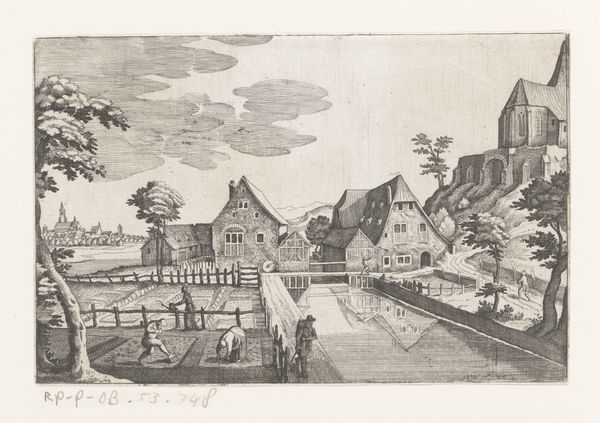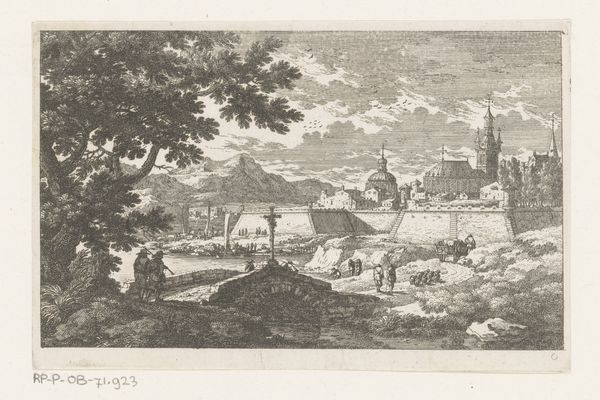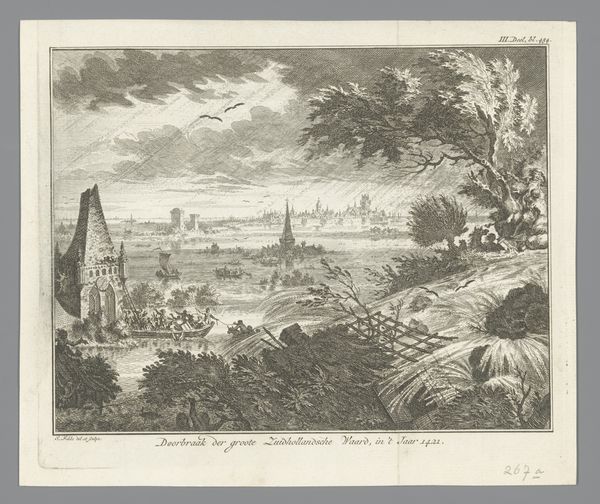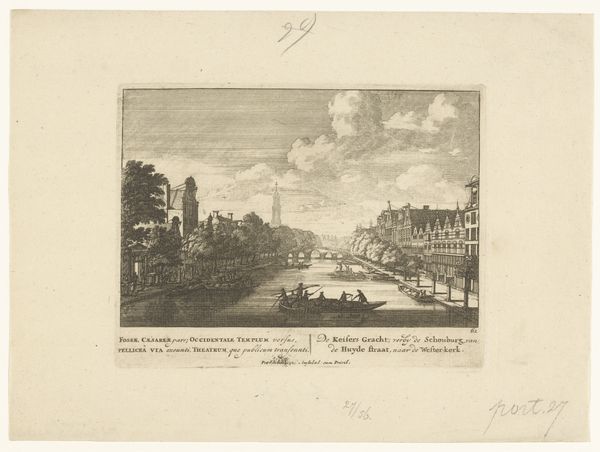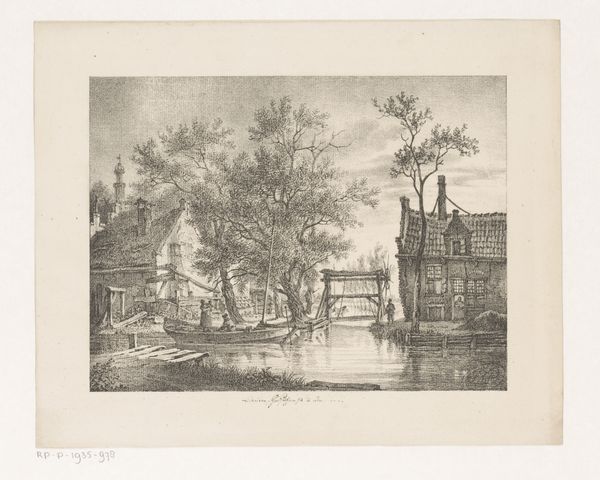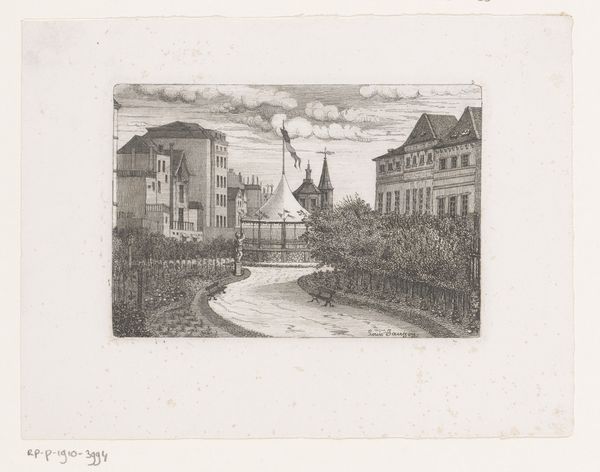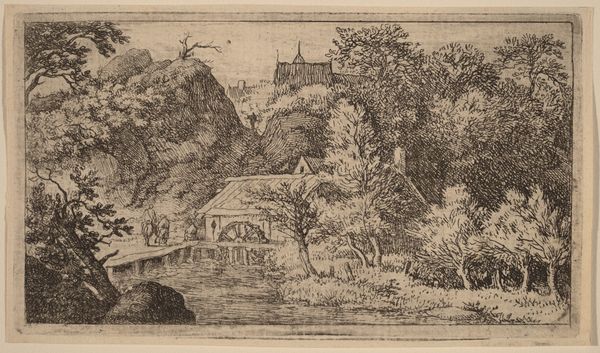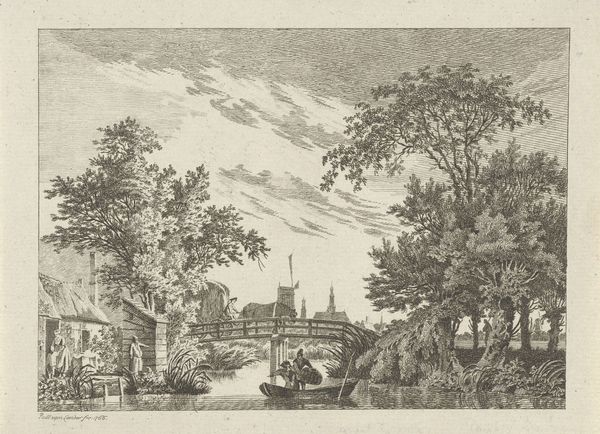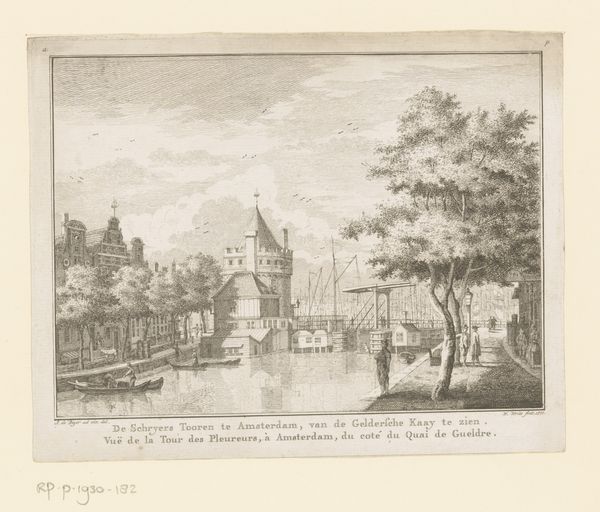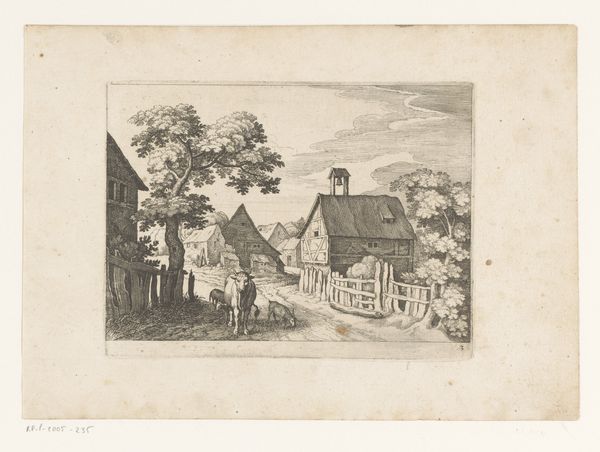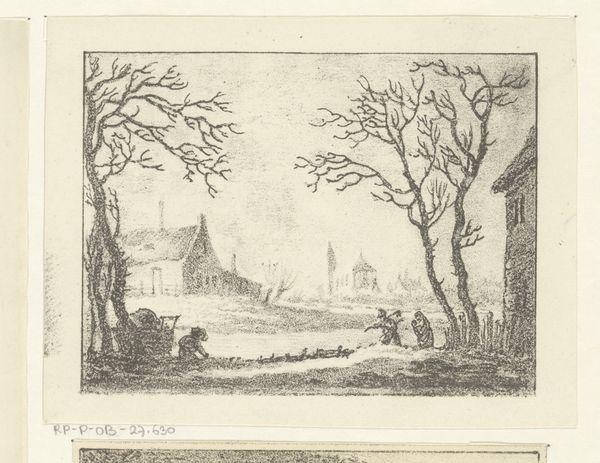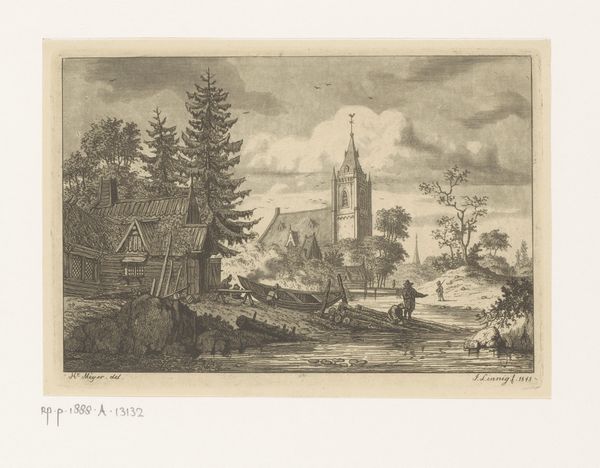
#
night
#
aged paper
#
light pencil work
#
photo restoration
#
wedding photography
#
old engraving style
#
retro 'vintage design
#
personal sketchbook
#
old-timey
#
vignette lighting
#
cartoon carciture
Dimensions: height 126 mm, width 191 mm
Copyright: Rijks Museum: Open Domain
Curator: Looking at this, my first impression is how calm the composition feels, despite all the small details included in the rendering of the night scene. Editor: Indeed. What we're seeing is a work entitled "Village at Night," attributed to Matthäus Merian the Elder, likely created sometime between 1603 and 1650. It’s currently housed in the Rijksmuseum. Curator: The village is really picturesque. I like the buildings nestled amongst the foliage on either side of the river, which seems so still that it perfectly mirrors the scene. It’s also interesting how he contrasts dark foreground elements with the illuminated architecture in the town center. Is that light from a church perhaps? Editor: Very astute observation. Churches historically acted not only as a center of spiritual life but of civil society as well. Symbolically, it anchors this community both literally and figuratively, hinting at a well-established social structure and moral foundation. This, despite the cover of night, conveys the peace, faith and perhaps prosperity of its burghers. Curator: And yet there is an air of the sinister, don’t you think? The trees remind one of gnarled, grasping hands. And the night, even though partially illuminated by moonlight and buildings, lends an undeniable atmosphere of secrecy, or perhaps, of danger. Editor: That’s a valid interpretation. Consider the artistic conventions of the era; artists were deeply invested in portraying morality. The inclusion of darkness in such a meticulously crafted piece is worth pausing over, wouldn’t you say? What might viewers of the day see when reflecting on its symbolism? Curator: Perhaps a caution, a reminder that even the most idyllic community is vulnerable to forces unseen, that evil can lurk even in the most seemingly virtuous setting. I think I agree. The night reminds us that we never truly see things fully. Editor: It provides an interesting lens through which we may analyze how a certain painter portrays collective perceptions. These prints allowed greater society to spread new social beliefs. It is no wonder then how politically charged the imagery can sometimes be. Curator: Thanks. Now, looking at this print again I wonder whether Merian aimed to show both the idealized, safe village while also acknowledging the more precarious reality of life within it. Editor: Perhaps it’s less about opposing realities and more about acknowledging that stability and shadow always coexist, especially in matters of social symbolism and public institutions like the church.
Comments
No comments
Be the first to comment and join the conversation on the ultimate creative platform.
